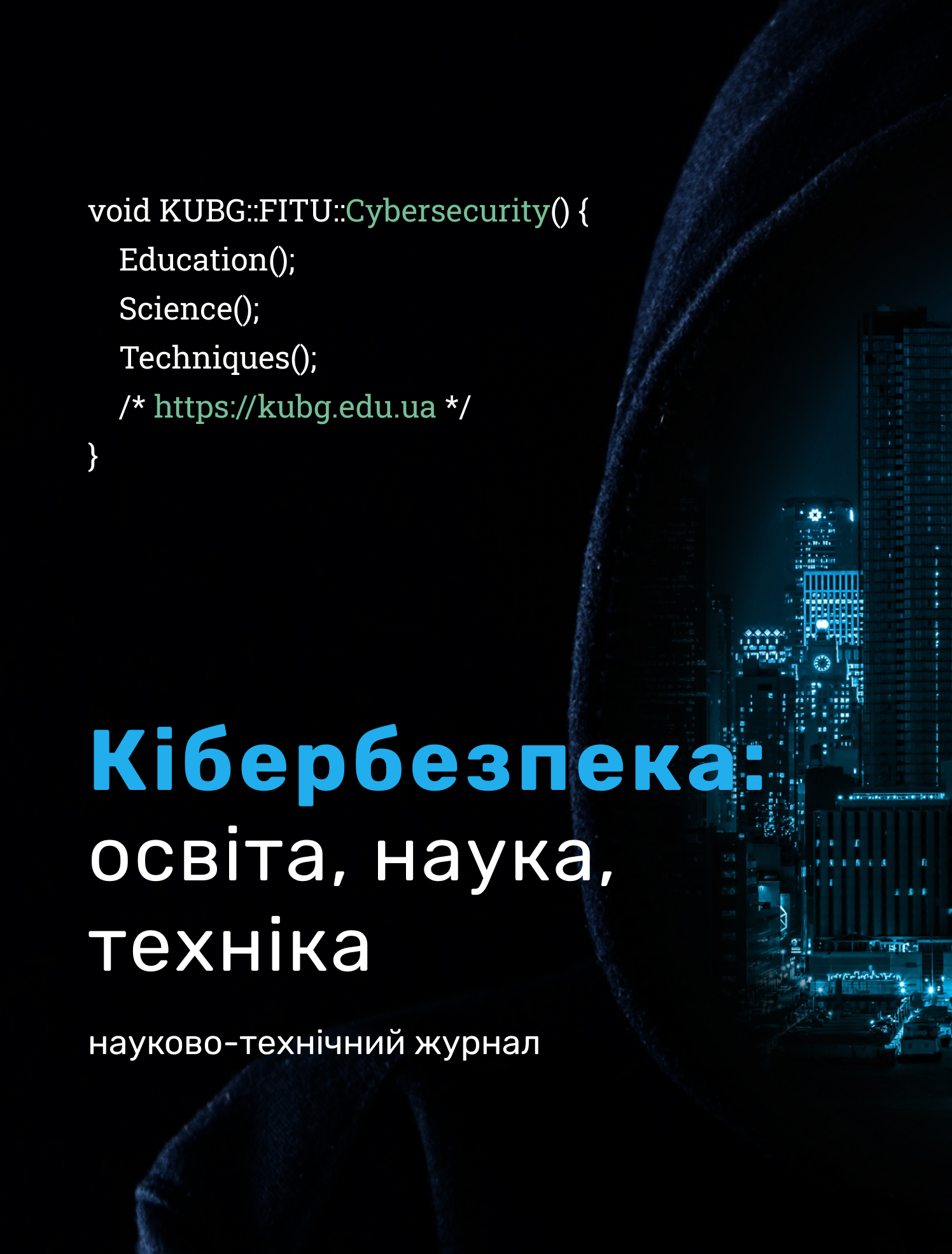МЕТОД СЕЙСМОАКУСТИЧНОГО МОНІТОРИНГУ ОКРЕМИХ СИГНАЛІВ ВИБУХОВИХ ПОЛІВ ДЛЯ ДИСТАНЦІЙНОЇ РОЗВІДКИ
DOI:
https://doi.org/10.28925/2663-4023.2025.30.981Ключові слова:
сейсмоакустичний моніторинг, дистанційна розвідка, вибухові поля, класифікація сигналів, математичне моделювання, параметрична модель, суперпозиція осциляторів, сейсмічні сигнали, акустичні сигнали.Анотація
Стаття присвячена розробці та обґрунтуванню ефективного методу дистанційної розвідки та моніторингу, що використовує унікальні фізичні характеристики вибухових полів. Необхідність такого методу зумовлена потребою у надійній, всепогодній та прихованій ідентифікації та локалізації джерел вибухів, що є критично важливим для безпеки, військової та інженерної розвідки. Метод розглядає вибух як складне джерело, що одночасно генерує сейсмічні (пружні) та акустичні (інфразвукові) сигнали. Основна мета роботи – представити метод сейсмоакустичного моніторингу вибухових полів, який дозволяє не тільки реєструвати, але й класифікувати окремі сигнали, генеруючи високоінформативні дані для дистанційної розвідки. Метод базується на етапах математичного моделювання сейсмоакустичних процесів. Ці етапи включають: визначення фізичних умов генерації сигналів: детальний аналіз перетворення енергії вибуху в сейсмічні хвилі, що поширюються в землі, та акустичні (ударні/інфразвукові) хвилі, що поширюються в атмосфері; математичні принципи моделювання фізичних процесів: розробка формалізованого підходу до опису поширення та реєстрації цих хвиль з урахуванням характеристик навколишнього середовища. Основним науковим результатом є створення та обґрунтування параметричної математичної моделі сейсмоакустичного моніторингу. Ця модель представлена як суперпозиція осциляторів, де кожен осцилятор відповідає за моделювання конкретного інформативного компонента сигналу вибуху. Запропонована модель дозволяє виділити та кількісно оцінити інформативні параметри, що безпосередньо характеризують сигнал вибухового поля (наприклад, енергію, частотний склад, час приходу, амплітуду). Використання суперпозиції осциляторів забезпечує високу гнучкість моделі та її здатність адаптуватися до різних типів вибухових сигналів і умов навколишнього середовища. Запропонований метод забезпечує міцну теоретичну основу для побудови автоматизованих систем дистанційної розвідки. Використання параметричної моделі у вигляді суперпозиції осциляторів дозволяє ефективно класифікувати та локалізувати вибухові події, відокремлюючи їх від природних і штучних шумів. Це значно підвищує надійність та інформативність сейсмоакустичних комплексів, роблячи метод цінним інструментом оперативного контролю та стратегічного моніторингу.
Завантаження
Посилання
Allaby, A., & Allaby, M. (2003). Oxford dictionary of earth sciences (2nd ed., reissued with corrections and new covers). Oxford University Press.
Dunnicliff, J. (1993). Geotechnical instrumentation for monitoring field performance. Wiley.
Lay, T. (Ed.). (2009). Seismological grand challenges in understanding Earth’s dynamic systems: Long-range science plan for seismology workshop. Report to the National Science Foundation, IRIS Consortium.
Marquardt, D. (1963). An algorithm for least-squares estimation of nonlinear parameters. SIAM Journal on Applied Mathematics, 11(2), 431–441.
Mostovoy, S. V., Mostovoy, V. S., & Osadchuk, A. E. (1998). Non-identified detection of signals against a microseismic background. Geophysical Journal, 18, 265–271.
Mostovoy, V. S. (2011). Optimal estimates of nonlinear parameters in seismic acoustic monitoring models. Proceedings of the National Academy of Sciences of Ukraine, (8), 103–106.
Mostovoy, V. S., & Mostovoy, S. V. (2012). On the correctness of nonlinear regression tasks in monitoring natural and man-made objects. Geophysical Journal, 34(2), 140–143.
Mostovoy, V., & Mostovyy, S. (2014). Estimation of parameters of seismic waves. Transactions of the National Academy of Sciences of Ukraine, 2, 118–123.
Mostovoy, V., & Mostovyi, S. (2016). Mathematical model of seismic signal as a flow of physically non-realizable single seismic waves. Geophysical Journal, 38(5), 166–169.
Mostovoy, V. S., Toliupa, S. V., & Shevchenko, A. M. (2023). Optimization of the dynamic parameters of an object in a mathematical model of seismo-acoustic monitoring of natural and engineering objects. Science-Intensive Technologies, 2(58), 412–422. https://doi.org/10.18372/2310-5461.58.17647
Plessix, R.-E. (2006). A review of the adjoint-state method for computing the gradient of a functional with geophysical applications. Geophysical Journal International, 167(2), 495–509.
Robinson, M., & Houghtalen, R. (2011). Dangerous dams. Rhode Island Canoe/Kayak Association (Rhode Island). Retrieved from https://www.ricka.org/
Shevchenko, A. (2024). Methodology for seismoacoustic monitoring of the impact of shock waves on critical infrastructure facilities. Cybersecurity: Education, Science, Technology, 4(24), 351–362.
Shevchenko, A. M., & Yarmolai, I. O. (2024). Parametric mathematical model of seismoacoustic monitoring of a single mortar explosion. Telecommunications and Information Technologies, 1(82), 122–129.
Shevchenko, A. M., & Yarmolai, I. O. (2024). Optimization of informative parameters of a mathematical model for seismoacoustic monitoring of natural and engineering objects. Zv’iazok, 5, 83–89.
Shevchenko, A. M. (2024). A mathematical representation of an automated system designed to monitor critical infrastructure objects using seismic and acoustic signals. Scientific Notes of the State University of Telecommunications, 1(5), 85–93.
Опубліковано
Як цитувати
Номер
Розділ
Ліцензія
Авторське право (c) 2025 Admin Skladannyi

Ця робота ліцензується відповідно до Creative Commons Attribution-NonCommercial-ShareAlike 4.0 International License.




